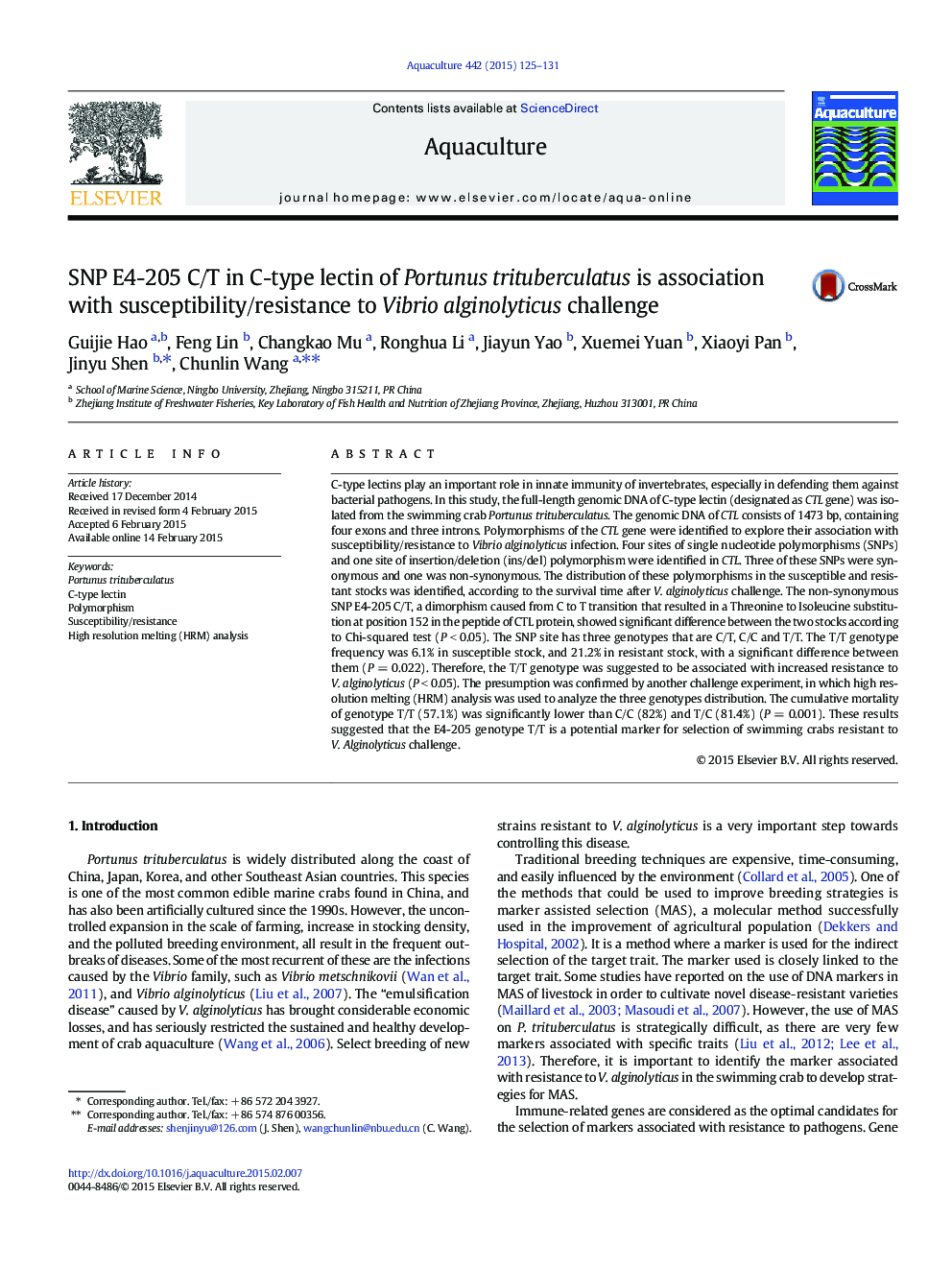| کد مقاله | کد نشریه | سال انتشار | مقاله انگلیسی | نسخه تمام متن |
|---|---|---|---|---|
| 2421608 | 1552845 | 2015 | 7 صفحه PDF | دانلود رایگان |

• The full-length genomic DNA of C-type lectin was acquired from Portunus trituberculatus and designated as CTL gene.
• The polymorphisms were identified in CTL and the SNP E4-205 C/T showed significant difference between the resistant and susceptible crabs stocks.
• The high resolution melting (HRM) analysis method was established to analyze the three genotypes of E4-205 SNP.
• The T/T genotype of E4-205 SNP could be a potential gene marker for future selection of swimming crabs with enhanced resistance to V. alginolyticus.
C-type lectins play an important role in innate immunity of invertebrates, especially in defending them against bacterial pathogens. In this study, the full-length genomic DNA of C-type lectin (designated as CTL gene) was isolated from the swimming crab Portunus trituberculatus. The genomic DNA of CTL consists of 1473 bp, containing four exons and three introns. Polymorphisms of the CTL gene were identified to explore their association with susceptibility/resistance to Vibrio alginolyticus infection. Four sites of single nucleotide polymorphisms (SNPs) and one site of insertion/deletion (ins/del) polymorphism were identified in CTL. Three of these SNPs were synonymous and one was non-synonymous. The distribution of these polymorphisms in the susceptible and resistant stocks was identified, according to the survival time after V. alginolyticus challenge. The non-synonymous SNP E4-205 C/T, a dimorphism caused from C to T transition that resulted in a Threonine to Isoleucine substitution at position 152 in the peptide of CTL protein, showed significant difference between the two stocks according to Chi-squared test (P < 0.05). The SNP site has three genotypes that are C/T, C/C and T/T. The T/T genotype frequency was 6.1% in susceptible stock, and 21.2% in resistant stock, with a significant difference between them (P = 0.022). Therefore, the T/T genotype was suggested to be associated with increased resistance to V. alginolyticus (P < 0.05). The presumption was confirmed by another challenge experiment, in which high resolution melting (HRM) analysis was used to analyze the three genotypes distribution. The cumulative mortality of genotype T/T (57.1%) was significantly lower than C/C (82%) and T/C (81.4%) (P = 0.001). These results suggested that the E4-205 genotype T/T is a potential marker for selection of swimming crabs resistant to V. Alginolyticus challenge.
Journal: Aquaculture - Volume 442, 1 May 2015, Pages 125–131